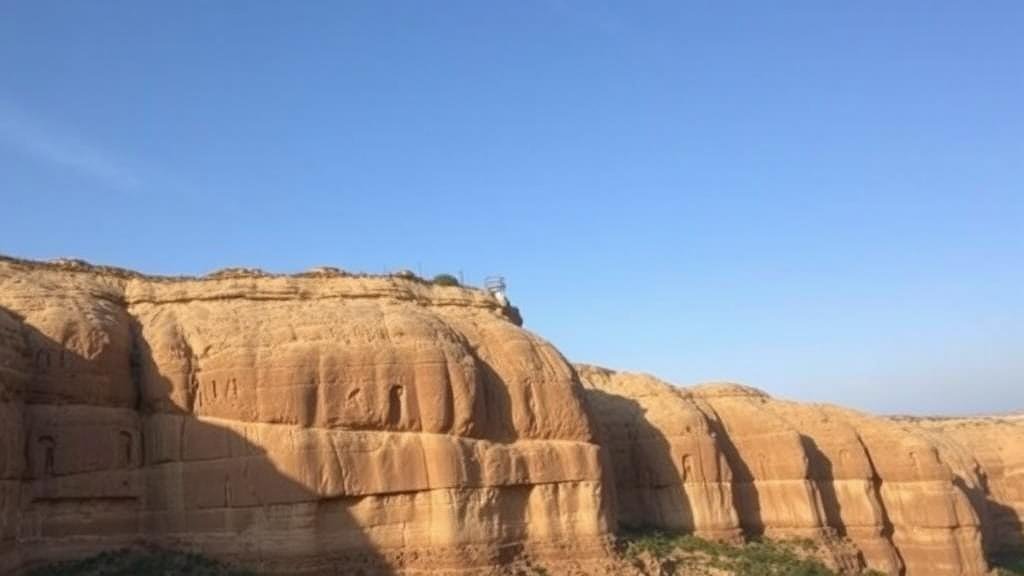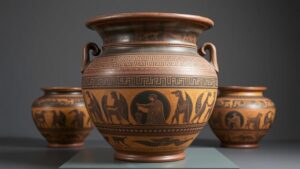Decoding forgotten symbols carved into remote cliff faces.
Decoding Forgotten Symbols Carved into Remote Cliff Faces
Throughout history, human beings have used symbols as a medium of communication. Often, these symbols were etched into cliff faces, serving as a record of past lives, beliefs, and cultures. Today, many of these symbols remain largely forgotten, waiting to be deciphered and understood. This article will explore the significance of these carvings, highlight some notable examples from around the world, and discuss current methods for decoding these ancient symbols.
The Historical Context of Cliff Carvings
Cliff carvings, or petroglyphs, have been found on every continent except Antarctica. These symbols date back thousands of years, with some of the oldest known carvings in Namibia, Africa, estimated to be over 26,000 years old. The reasons for their creation vary widely, ranging from spiritual or religious significance to practical uses such as territorial markers or historical accounts.
Notable Examples of Cliff Symbols
Several cliff carvings have gained attention due to their historical and cultural importance. Here are a few noteworthy examples:
- The Nazca Lines, Peru: While not strictly cliff carvings, the enormous geoglyphs etched into the desert floor include images that are best viewed from above. These lines date back to between 500 BCE and 500 CE and include animal shapes and geometric forms, showcasing the ingenuity of the Nazca civilization.
- The Chumash Petroglyphs, California, USA: Found in the Santa Monica Mountains, these carvings provide insight into the Chumash culture that thrived from 1000 BCE to 1600 CE. The symbols often represent animals and spiritual imagery.
- Rock Art of the Bhimbetka Caves, India: These caves contain some of the earliest known rock paintings, dated to around 30,000 years ago. symbols depict human activities, and animals, and showcase an early interaction with the environment.
Methods for Decoding Cliff Symbols
Deciphering the meanings behind these symbols can be as challenging as it is rewarding. Researchers employ a variety of techniques to decode ancient carvings:
- Contextual Analysis: Understanding the cultural and historical context in which the symbols were created is crucial. This can include examining artifacts found nearby or studying the daily lives of the people who created them.
- Symbol Comparison: Researchers often compare symbols from different locations or cultures to identify common themes or meanings. For example, certain shapes may represent similar concepts across different civilizations.
- Technological Tools: Advances in technology, such as 3D scanning and imaging, enhance the ability to analyze the depth and wear of carvings. This technology can reveal details that the naked eye might miss.
Real-World Applications of Understanding Cliff Symbols
Decoding these ancient symbols is not merely an academic pursuit; it has practical implications as well. For example:
- Cultural Preservation: By understanding these carvings, societies can better preserve their cultural heritage. Recognizing the significance of symbols may lead to increased protection of sites against vandalism or development.
- Tourism Development: Sites with significant petroglyphs can attract tourists. This not only raises awareness of the local culture but also contributes economically through tourism-related activities.
Conclusion: The Importance of Preservation and Education
As we uncover the meanings behind forgotten symbols carved into remote cliff faces, we gain valuable insights into our shared human history. These carvings are more than mere images; they are windows into the lives and beliefs of our ancestors. importance of preserving these sites cannot be understated, as they serve as critical links to our past. Understanding them fosters appreciation for cultural diversity and highlights the rich tapestry of human experience.
As researchers and archaeologists continue to explore these remote areas, the hope is to piece together the stories these symbols tell, bridging the gap between past and present. Engaging with these ancient artifacts not only enhances our knowledge but also strengthens our connection to the human journey.


